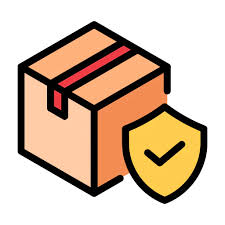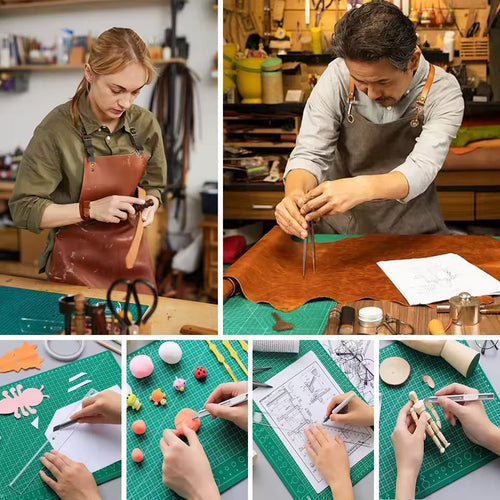A Complete Guide to Understanding Quilting Terminology helps you learn the language of quilting. If you are new to quilting or trying to follow a pattern, the terms can feel confusing. At HandMade Keeps, we want to make quilting simple. This guide will explain quilting terms clearly so you can focus on creating beautiful quilts.
What Is Quilting Terminology?
Quilting terminology refers to the words and phrases used in quilting. These terms describe fabrics, tools, techniques, and sewing instructions. Knowing this language helps you read patterns and use tools correctly. It also helps you talk with other quilters and follow tutorials.
Essential Quilting Terms Every Beginner Must Know
-
Quilt Top: The upper layer of the quilt made from patchwork or design.
-
Batting: The middle layer providing warmth and thickness.
-
Binding: The strip of fabric that covers the edges.
-
Seam Allowance: The fabric space between the edge and the stitching line.
-
Piecing: Joining fabric pieces to form the quilt top.
-
Appliqué: Sewing smaller pieces onto a larger background.
-
Patchwork: Sewing small pieces of fabric together into designs.
-
Backing: The bottom layer of the quilt.
-
Basting: Temporary stitching to hold layers in place before quilting.
-
Sashing: Strips placed between blocks in a quilt.
Common Quilting Abbreviations and What They Mean
| Abbreviation | Meaning |
|---|---|
| WOF | Width of Fabric |
| FQ | Fat Quarter |
| HST | Half Square Triangle |
| RST | Right Sides Together |
| SC | Strip Cut |
| LOF | Length of Fabric |
Quilting Measurements & Fabric Terms Explained
In U.S. quilting, inches are standard. Yardage refers to fabric measured by the yard. Other terms include:
-
Fat Quarter: A quarter-yard cut into a square-like shape
-
Jelly Roll: Pre-cut strips, usually 2.5 inches wide
-
Charm Packs: Squares, usually 5 x 5 inches
-
Layer Cakes: 10 x 10 inch squares
-
Grainline: The direction of threads in fabric
-
Selvage: The finished edge that does not fray
-
Bias: Diagonal line across fabric, stretches more Cutting fabric straight matters. Use tools like a rotary cutter and cutting mat.
Quilt Construction Terminology
-
Piecing: Putting fabric pieces together
-
Chain Piecing: Sewing multiple pieces in a row without cutting the thread
-
Strip Piecing: Sewing long strips together before cutting blocks
-
Foundation Piecing: Sewing fabric on a backing pattern
-
Paper Piecing: Using paper as a guide
-
Quilt Sandwich: Layering top, batting, and backing
Quilting Techniques and Styles Explained
-
Hand Quilting: Stitching by hand
-
Machine Quilting: Stitching with a sewing machine
-
Free Motion Quilting: Freestyle stitching
-
Echo Quilting: Lines follow the shape of a design
-
Trapunto: Raised quilting technique
-
Wholecloth Quilting: One large piece of fabric with quilted designs
Tools and Notions Used in Quilting
-
Rotary Cutter: Cuts fabric cleanly
-
Cutting Mat: Protects surface and helps measure
-
Quilting Ruler: Guides accurate cuts
-
Walking Foot: Helps move thick layers evenly
-
Quilting Hoop: Holds fabric tight while stitching
-
Seam Ripper: Removes stitches
-
Thimble: Protects fingers when hand quilting
HandMade Keeps provides useful quilting tools like our Patchwork Rotary Cutter, Quilters Cutting Mat, and our 5-in-1 Quilt Cutting Template. Check out our Free Gift Offer with every Quilt Cutting Template.
Bonus: Slang & Colloquialisms in Quilting
-
UFO: Unfinished Object
-
WIP: Work in Progress
-
Quilt Police: People who correct quilting rules
-
Stash: Fabric collection
-
Frogging: Ripping stitches ("rip it, rip it")
FAQs
What does WOF mean in quilting?
Width of Fabric, usually 42-44 inches.
What is the difference between batting and backing?
Batting is the middle layer. Backing is the fabric under the quilt.
What does RST stand for?
Right Sides Together. Use this when sewing fabric pieces.
Intermediate & Advanced Quilting Terms
-
Fussy Cutting: Cutting around a specific fabric design
-
Nesting Seams: Aligning seams to reduce bulk
-
Match Points: Key points to align in a design
-
Quilt as You Go (QAYG): Quilting sections before joining
-
Echo Quilting: Repeated lines around shapes
-
Quilting in the Ditch: Stitching in the seams
-
Longarm Quilting: Using a long machine for large quilts
Fabric Types and Textures Common in Quilting
-
Cotton: Easy to sew and most used
-
Flannel: Soft and warm
-
Linen Blends: Textured and natural
-
Batiks: Hand-dyed, patterned fabric
-
Muslin: Basic cotton used for backing or practice
-
Quilter’s Cotton: Quality cotton made for quilting
Math Terms Used in Quilting
-
Square Up: Trim blocks to exact size
-
Diagonal Measurement: Used for setting triangles
-
Seam Allowance Math: Usually ¼ inch
-
Quilt Size Categories: Baby, Throw, Twin, Queen, King
-
Yardage Calculation: How much fabric you need
| Quilt Size | Approximate Inches |
| Baby | 36 x 52 |
| Throw | 50 x 65 |
| Queen | 90 x 100 |
| King | 108 x 108 |
Regional Variations in Quilting Terminology
U.S. quilters use inches. In the UK, centimetres are common. Some Southern U.S. areas have unique terms. Amish, Hawaiian, and African-American communities have rich quilting traditions with unique language.
How Understanding Quilting Terminology Helps You
You learn faster and make fewer errors. You can follow tutorials and talk with other quilters. You avoid waste and boost creativity.
Free Resources to Learn Quilting Terminology
-
YouTube: Missouri Star Quilt Company, Jordan Fabrics, Angela Walters
-
Websites: American Quilter's Society, National Quilters Circle, Quilting Daily
-
Join quilting guilds in your local U.S. area for in-person help
Final Thoughts
Understanding quilting terms builds your confidence and saves time. Keep this glossary nearby when you start a project. Explore quilting tools and templates from HandMade Keeps to simplify your next project and enjoy the creative process like The Ultimate Quilt Chart and The Ultimate Bundle of Quilting Guides.




